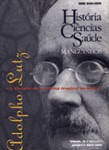Mar 2015
In Bolivia’s High Plains, or Altiplano, the indigenous Aymara live by proud traditions. They work the land, weave home-dyed yarns and play handcrafted woodwinds in festivals that draw tourists from all over the world.
But the Aymara, suspicious of modern medicine, also suffer among the world’s highest maternal and infant mortality rates. In 2013, 230 women died for every 100,000 registered births and 36 babies died for every 1,000 registered births. When Olmo Calvo, a freelance photojournalist from Madrid, received a grant for work documenting Spain’s economic crisis, he used the money to visit the Altiplano and document efforts to stem this medical and humanitarian crisis. Read full story in the New York Times blog.

The midwife Leonarda Quispe Rojas, 60, massaged the belly of Zenobia Mamani Ramos, who was 38 week pregnant in her home in Patacamaya, Bolivia

Nearing her delivery, Zenobia Mamani Ramos, 38, continued to receive care from Lenarda Quispe Rojas, an Aymará midwife.
Read more, in Spanish, about traditional medicine in HCS Manguinhos:
Quispe, Walter Álvarez and Loza, Carmen Beatriz. Medicinas tradicionales andinas y su despenalización: entrevista con Walter Álvarez Quispe. Hist. cienc. saude-Manguinhos, Dic 2014, vol.21, no.4, p.1475-1486. ISSN 0104-5970
Loza, Carmen Beatriz. ¿Por qué es difícil subordinar la medicina tradicional andina a la biomedicina?. Hist. cienc. saude-Manguinhos, Mar 2014, vol.21, no.1, p.353-356. ISSN 0104-5970
Loza, Carmen Beatriz. ¿La disminución de la mortalidad materna es un simple problema técnico de adecuación cultural?. Hist. cienc. saude-Manguinhos, Set 2013, vol.20, no.3, p.1082-1086. ISSN 0104-5970







